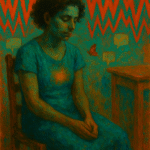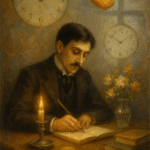Interrupted Futures: Basquiat’s Unfinished Symphony
From the beginning, Jean-Michel Basquiat painted as if time were chasing him. In his work, urgency collides with brilliance—symbols crash into figures, words fragment across canvases, and colors fight for breath. Jean-Michel Basquiat’s interrupted future wasn’t just a personal loss—it was a cultural silence that never got filled.
Basquiat was a child of chaos and genius. Emerging from the streets of New York with spray cans and sketchbooks, he entered galleries still carrying the pulse of graffiti and jazz. But the world that commodified him never fully understood him. Nor did it wait long enough to hear what he might say next.
His death at 27 didn’t just end a life; it paused a language in mid-sentence. What would he have created in a world with more time, more breath, less noise? The question echoes not just for Basquiat, but for all artists whose voices were too fierce, too early, too brief.
Art historians like Franklin Sirmans have argued that Basquiat’s legacy reshaped American art forever. And yet, what remains most powerful is the ghost of what he didn’t get to finish.
Like many unfinished lives, Jean-Michel Basquiat’s interrupted future lives on in the tension of his brushstrokes, in the gaps between his words, in the spaces where silence overwhelms sound.


